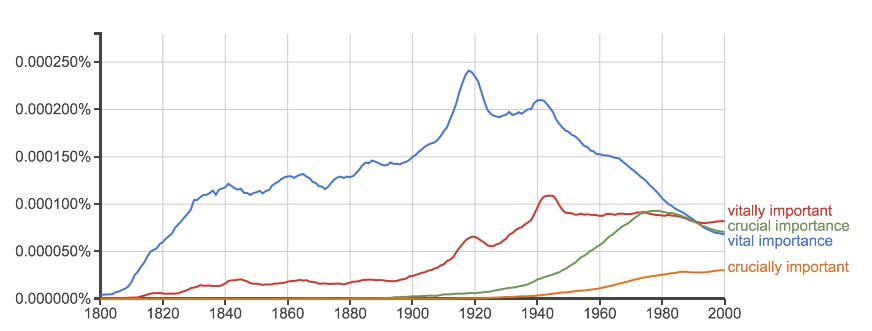In 1869, a New York Post reporter, commenting on recent scientific advances, discusses an expedition sponsored by the British government that dredged the ocean floor, previously believed to be devoid of life:
We have recently had occasion to comment on the crucial importance of these results, in their bearing upon many unsettled questions of geology and zoology…
The use of the word crucial in this sense is first attested in 1830, derived from Francis Bacon’s 1620 New Latin coinage of instantia crucis, literally a crossroads moment where only one theory or hypothesis is proven true. The science reporter in 1869, then, is suggesting that these discoveries may prove decisive for a number of questions in zoology and geology, supporting some theories but disproving others, such as the notion that the ocean floor is a dead zone.
It is highly unlikely the reporter is pointing out the central importance of the expedition’s results because crux, the Latin nominative of which crucis is the genitive, did not appear in constructions such as the crux of the matter until 1888. This does, however, suggest that crucially important could later include this sense as well as that derived from Bacon, and indeed is more likely responsible for most contemporary uses than the one in the science report.
One of the earliest instances of crucially important takes place in an 1894 article whose immediate context is monetary policy: Pres. Grover Cleveland had vigorously defended the gold standard, but midterm elections in the Senate could change the calculus, since those elected would serve beyond the end of Cleveland’s term in office:
But the Senators elected this year hold on for four years more, and may determine future legislation on crucially important matters.
Now whether the author is thinking of a crossroads moment in monetary policy or central issues to be decided in the Senate, crucial would have served just as well. I suggest that the reason why the single adjective was not chosen was because the writer was thinking of how to change, as a single unit, crucial importance into an exactly equivalent adjective, yielding crucially important.
An analogy would be the relationship between the historically more frequent vital importance and vitally important, which rarely yields a tautology except for vitally important interests which are most likely identical to vital interests. A Google Books NGram can be instructive:

In the first half of the 20th century, there is a rough parallel between vital importance and vitally important, including two spikes around 1920 and early 40s, most likely due to the two world wars. The noun phrase is more frequent than the adverb + adjective until the early 1990s.
Beginning from virtually nothing in the 1920s crucial importance is now practically even with vital importance, but only because of the drop in frequency of both, probably due to constructions like of vital/crucial importance feeling antiquated or stilted in many contexts.
Though vitally important has held its own, the less frequent crucially important is on the rise, though at the moment still less frequent than the noun phrase. This rise may suggest an uncoupling from crucial importance, but once the transformation of the noun phrase into an adverb + adjective was made, it continues to be available, despite what might be considered a tautology.

